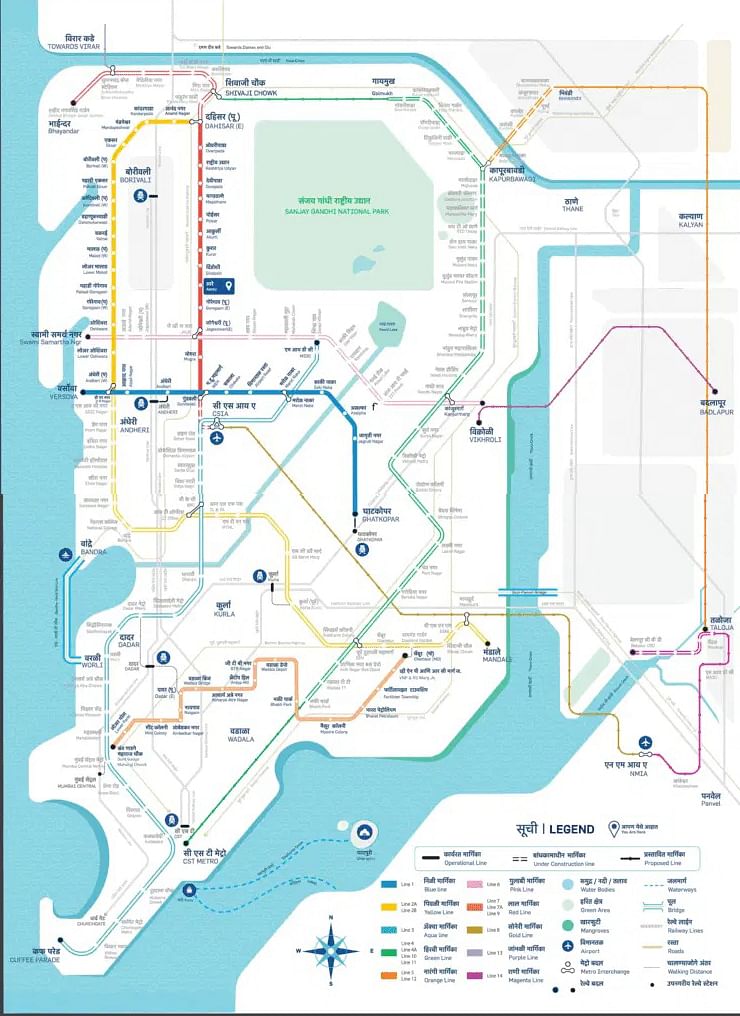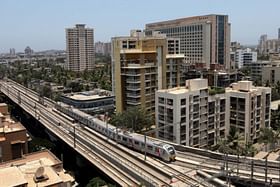The Mumbai Metropolitan Region Development Authority (MMRDA) recently said more than 11 lakh commuters have used the Metro lines 2A and 7 within ten days of its inauguration by Prime Minister Modi.
The Mumbai Metro 1 Line will now be running with increased capacity to accommodate the growing demand of ridership in the city. The first operational line of the Mumbai Metro runs from Versova to Ghatkopar via Andheri.
The line will now make 18 additional trips per day. In addition, the train speed has been increased. The trains will now be travelling at 80 kmph, up from 65 kmph.
This increment will result in a higher frequency of metro services on the route, particularly during rush hours. This change is expected to ease the crowd predominantly at the Ghatkopar Metro Station. During non-peak hours, the stretch will have services every five to eight minutes.
Since the recent launch of the second phase of the 2A and 7 lines, the Mumbai Metro network has received an overwhelmingly positive response from the city’s residents.
The Mumbai Metropolitan Region Development Authority (MMRDA) recently said more than 11 lakh commuters have used the Metro lines 2A and 7 within ten days of its inauguration by Prime Minister Modi on 19 January 2023.
This has significantly increased the ridership numbers on the Mumbai Metro 1.
Metro 1 intersects the other two operational lines with – DN Nagar station on Line 2A and Western Express Highway (WEH) on Line 7. These interchanging stations draw good number of passengers for the network, as it further connects to the Ghatkopar station, which draws approximately 1.10 lakh daily ridership.

Importance Of Line 1
Metro 1 stations are directly connected with the suburban central railways at Ghatkopar station and the western railways at Andheri station.
This connectivity acts as feeder service for the commuters of both the metro and the railways. The 11.4 km long stretch of Metro 1 further serves the purpose of connecting the eastern and western suburbs to Western and Central Railway.
A large number of daily commuters previously had to travel a longer distance from the central line to the western line via Dadar and Parel to change at these stations. The metro has eased travelling for these commuters and has decreased the travel time compared to the travel in longer suburban railway network.

The opening of this line has also elevated the surrounding regions for real estate, commercial activities and residential developments.
Additionally, the alternative created with new interconnectivities, passengers can now get down at WEH on Line 1 and travel to Dahisar on Line 7 or can go to DN Nagar station and use Line 2A.
Earlier the commuters used to alight at Andheri station and depended on the local trains to go to western suburbs like Dahisar and Goregaon. Andheri has a dense percentage of offices and the network of these operational lines has eased the commute to the area.
The successful usage of this metro connectivity has reduced the burden on the suburban local train networks. The local rail network has been the core transit mode for the city for years.
According to railway officials, ridership on suburban local trains has recorded a dip since the launch of the new metro stretches. For example, the passenger count at Dahisar station from 12 January to 19 January was 518,517 while between 20 January and 26 January, it was reduced to 347,838.


